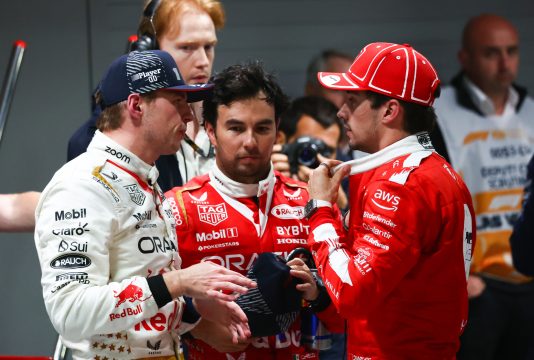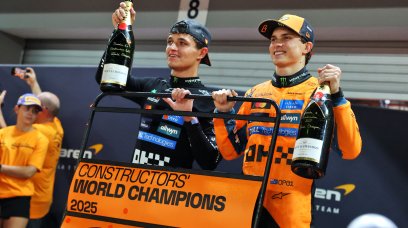F1 returns to Las Vegas next weekend for one of the most eagerly-anticipated events of the season.
Sin City has been transformed into a temporary race circuit for the weekend as cars prepare to race past the world-famous hotels and casinos that stand aligned with The Strip.
The sport hasn't visited the Nevada city since 1982 when the second and final race at Caesars Palace took place, with the failure of that event a difficult tag to shrug off.
So what is different about the return to Las Vegas and why should the new-look event outshine its predecessor?
Viewed by others:
The circuit and time of race
When F1 visited in 1981 and 1982, Caesars Palace held the race partly in its car park and extra land between Las Vegas Boulevard and Interstate 15 to the west.
The circuit consisted of 10 left-handed corners, three right-handed corners and only two short straights on a track crammed into a short space in order to fulfil the minimum two-mile circuit length, posing a challenge for the drivers not conducive to exciting racing action.
Whilst similar fears over racing action are in place for the new event, the long blast down The Strip should lead to overtaking opportunities, with a similar chance expected into Turns 1 and 5.
The location of the 1981-82 event was an issue as well, with the track taking place in what looked like a Las Vegas void. There was none of the razzmatazz in the background that gives the idea of a race in the city such excitement.
Fast forward to the present day and the cars will fly past the likes of the Venetian, the Mirage, Caesars Palace, the Flamingo and the Bellagio among other hotels and casinos down the Strip, whilst around the back end of the circuit, drivers will wind around the impressive new Sphere.
With the race taking place late on Saturday night local time, darkness will descend and the lights of the city will surely add value to the atmosphere that the original event 42 years previous certainly missed.
The challenging temperatures
When Alan Jones and Michele Alboreto won the two Caesars Palace Grands Prix in the early 1980s, the temperatures posed a challenge for drivers in terms of heat.
Drivers suffered from heat exhaustion - much like the modern competitors struggled in Qatar last month - with the race held in the middle of the day in September.
But with the later date for the new event and the night-time start, drastically cooler temperatures are expected - as low as four degrees Celsius.
This will give drivers and teams a headache when it comes to tyre warm-up - not necessarily straight from the pits where tyres have been suitably heated by their blankets, but more if there is a Safety Car. There will also be a greater emphasis on a perfectly prepared formation lap.
The hype
Whilst the event has its critics even before a wheel has been turned, there is no denying the hype that has been built for Las Vegas.
The spectacle is expected to draw up to 100,000 spectators per day, which dwarfs the estimated figures from the Caesars Palace races in the 1980s.
A crucial factor with this is that the hotel itself promoted the event then, much like MGM now promotes boxing events at the MGM Grand.
That meant that Caesars' main competitors on The Strip were reluctant to help the promotion of the event - but that has all changed now.
The package options with each of the hotels in sight of the long straight prove this is a unified front. Yes, there's the argument that the regular fan is being priced out, but there will still be demand from a specific category of client.
The proof will be in the pudding as to whether the Las Vegas Grand Prix proves to be a long-lasting success but there is no way it can compare to its first try on the calendar.
Don't miss out on any of the Formula 1 action thanks to this handy 2026 F1 calendar that can be easily loaded into your smartphone or PC.
Download the calenderMost read
In this article
F1 2023 Las Vegas Grand Prix RN365 News dossier





























Join the conversation!